|
by David Smith As a long serving practitioner in the ATM Industry I have witnessed several policy decisions that really intrigued me. For example, some banks take the stance that their in-branch automation is solely for their own customers. Others, take a more inclusive approach allowing non-bank consumers to use their facilities alongside their own clients. I have certainly experienced both sides of this question in different parts of the world. As a fan of consumer-centric businesses, I favor the latter approach, although I understand the rationale of the “my customers only” principles. However, the policy thinking around “who will you serve?” becomes further convoluted when you recognize that many banks run promotions to attract new customers, offering money to new customers as a signing-up reward. Sometimes these incentive payments can reach £100 or more. Surely, allowing non-bank consumers to use your branch automated services can be a powerful recruitment aid. I mean, you know exactly where they are at that point in time, what they are doing, and you have staff on hand to help and advise them appropriately. Surely this is a good thing, right? Once you truly embrace every consumer interaction as an opportunity to learn something new, to deepen the relationship, then you fundamentally change the possibilities for growth. Traditionally, banking automation was mechanically sophisticated but depended on proprietary vendor software to work. Consequently, banks often faced substantial costs for even simple customizations, particularly if they had a mixture of hardware from different vendors. Under these circumstances it was difficult to personalize the consumer’s experience, or to differentiate yourself from your competitors in a meaningful way. An investment in vendor-independent ATM software ensures true portability across any self-service device, thereby reducing costs and creating a greater choice in hardware. Happily, this restrictive situation has changed significantly with the growing market trust in vendor-independent, multi-vendor, ATM software. Additionally, the ATMIA’s new blueprint architecture clearly separates the task of terminal management from the payments switch, and embraces the versatile ISO 20022 messaging standard instead of the proprietary and more restrictive NDC protocol. These changes eliminate two of the greatest blockers to service flexibility. Banks now enjoy ready access to affordable self-service technologies, freeing them to create any branch experience they want. The next leap forward in ATM channel excellence is the application of relevant, real-time consumer information in a way that benefits both the consumer and the bank. Specifically, this step involves the deployment of workflow orchestration and machine learning-based recommendation engines.
So, how might a bank leverage workflow and recommendation engine technologies to improve their in-branch experience for both their own, and the non-bank, consumers?
Traditionally, an ATM would collect the card and PIN information before sending any information to the switch. This is all ‘dead-time’ during which the bank has no information about the consumer to act on. In a more consumer-centric approach, the ATM sends the card information to the switch as soon as it is entered. The switch replies with relevant consumer information that can be used to personalize the services offered. In addition, advisory information can be sent to a branch agent’s device notifying them about the consumer, the machine they are using, and what should be done. Furthering this illustrative scenario, the recommendation engine might determine that a non-bank consumer qualifies for an account sign-up special offer or other guest services based on the number of previous visits, the time of day, transactions performed, etc. Special offer vouchers could be dispensed via the receipt printer for redemption with a branch agent. Simple guest services could include the waiving of the acquiring fees in return for phone number information or other contact details. Numerous other relationship-building options can be easily and affordably implemented with today’s technology. The biggest obstacle to the creation of consumer-centric ATM channels used to be the infrastructure but this is no longer true. A much larger obstacle, in my opinion, is the legacy mindset among senior stakeholders that rejects the ATM channel as a vehicle for innovation and richer consumer services. The financial pressures causing banks to close branches on a large scale are highly unlikely to subside any time soon. This situation is further aggravated by regulatory pressures on banks to provide third party access to consumer data – thereby inviting new competition for financial services. Now, more than ever, banks need to focus more about personalizing the consumer experiences they create as a means to strengthen brand loyalty and growth. THE CHANGING ATM LANDSCAPE Over the last decade, innovation in ATM services has been severely restricted as a result of several factors, including monopolistic business practices, restrictive legacy message protocols, and proprietary systems that became isolated from other banking channels and investment. However, the exciting news is that this situation is poised for rapid, and positive, change. The ATMIA's new blueprint architecture specifically calls for cloud- based processing, the use of modern integration options including ISO 20022 and APIs, and greater flexibility for ATM deployers to tailor the consumer's experience themselves. As a global leader in Retail Payments solutions, Lusis Payments is a strong contributor to the NextGen ATM initiative through its well proven TANGO transaction orchestration engine. When it comes to payments processing, TANGO is simply in a class of its own with 4 of the top 10 banks already using TANGO to empower their consumer payments strategies. TANGO is functionally-rich and well proven within both large and small banks and processors around the world. PERSONALIZED SERVICE: The New Battleground Consumer expectations and payments technology have both changed significantly since the early days of ATM services. In particular, the personalization of services to match a specific customer’s need is now commonplace for most digital channels. There is no doubt that business stakeholders are extremely interested in the attraction and retention of customers. In this respect the personalization of consumer service interactions is rightfully receiving significant investment. The replacement of the restrictive legacy ATM message protocols with XML and JSON alternatives is re-writing the market opportunities for providing a personalized ATM experience to everyone. In a NextGen world, a consumer's journey can be continually refined in real time by the provision of relevant, consumer-specific information that dynamically enhances transaction workflows based on the consumer's profile and choices. Of course, this power requires the transaction switch to have the flexibility to retrieve and distribute the consumer's data securely and without unreasonable processing delays.
THE CLIENT This client has over 55 years of experience as a leader in core banking processing. Their enterprise banking solutions empower institutions to grow their assets and reach new customers by integrating the latest digital technologies. The client's cloud-based core banking platform delivers a seamless mix of innovative, flexible, and secure banking services that provides institutions with a significant competitive advantage. THE NEED: An Agile Payment Solution The client has over 20 years in ATM processing that was founded on two different payments systems prior to the adoption of TANGO. Significantly, the client became increasingly frustrated by both legacy platforms due to the constraints they placed on the client’s business growth. The slowness of vendor maintenance support, the lack of development agility for new customer services, and skyrocketing costs of ownership all led to the need for a better solution for their future. Tired of navigating product and service obstacles with their original payment solution vendor the client turned to a second provider for help. This second provider was able to migrate them to their solution and provided adequate service and functionality for a few years. However, as customer demand for new services increased this second solution had also become stagnant and restrictive. The client then sought a third and final payment solution, one that demonstrably addressed the past growth issues. It was critical that the new solution would provide an agile architecture with the robustness to handle diverse and high-growth volumes. Additional high-priority requirements included; • the agility to continually, and rapidly, adapt to changing consumer needs, • the ability to rapidly create their own configurations on the fly, • a major reduction in application lifecycle costs. THE SOLUTION: TANGO by Lusis Payments The client performed an extensive research of all leading payments solution providers. Their findings indicated that there were decisive advantages in selecting TANGO from Lusis Payments. TANGO and Lusis Payments’ reputation for service and innovation far exceeded all of their business and technical requirements. TANGO's architecture, flexibility, ease of use and lower cost of ownership were once again identified by another client as compelling advantages over other solutions.
|
lUSIS nEWSThe latest company and industry news from Lusis Payments. Archives
June 2024
Categories
All
|



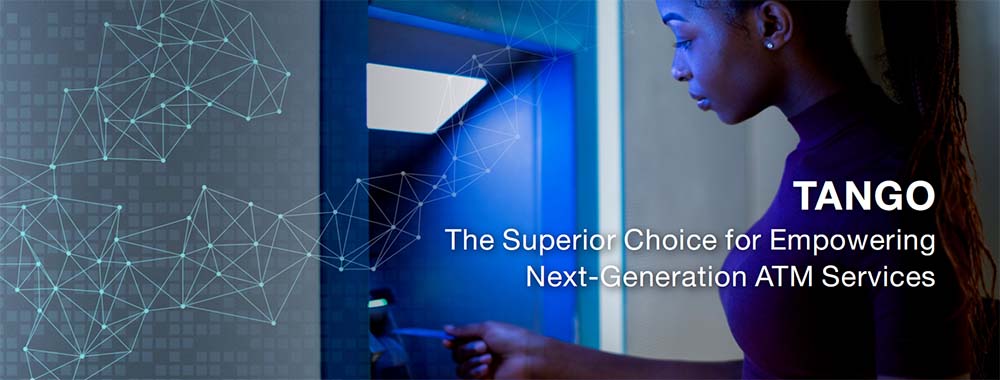
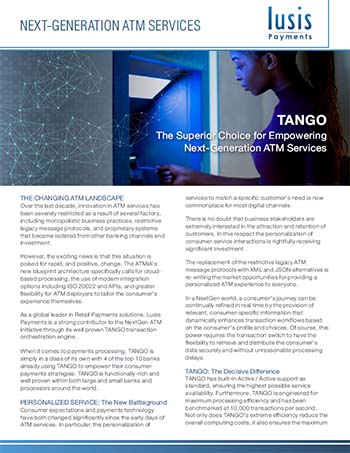
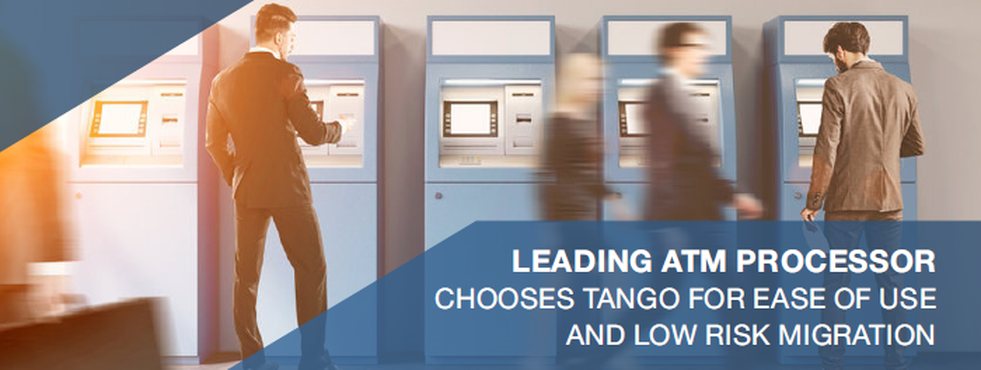
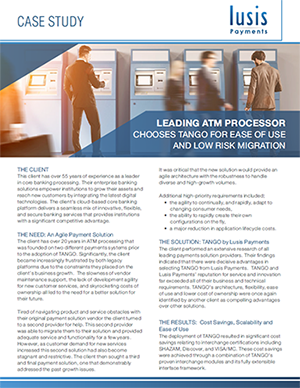
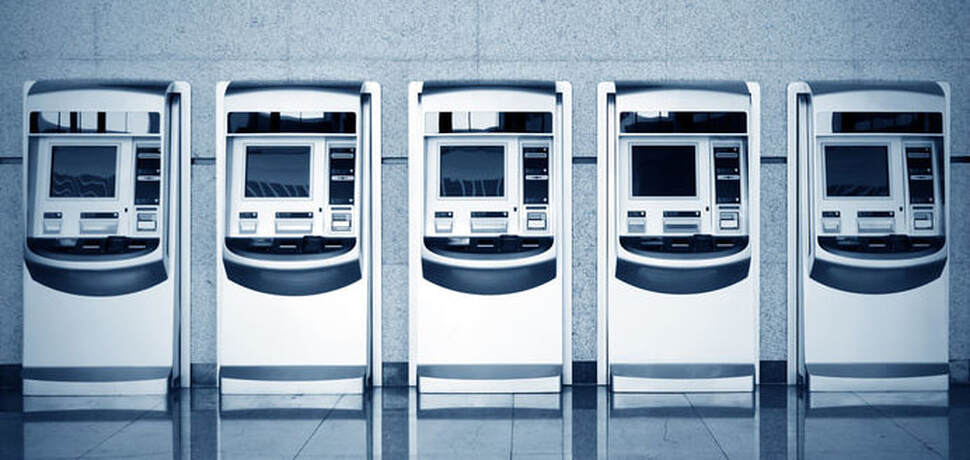

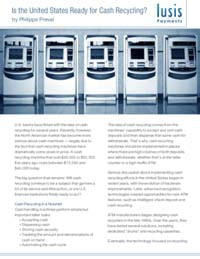
 RSS Feed
RSS Feed